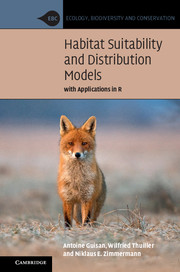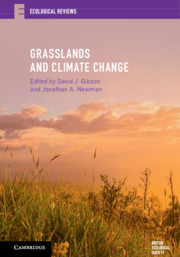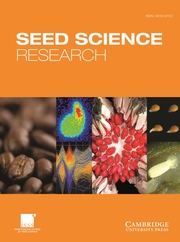Habitat Suitability and Distribution Models
This book introduces the key stages of niche-based habitat suitability model building, evaluation and prediction required for understanding and predicting future patterns of species and biodiversity. Beginning with the main theory behind ecological niches and species distributions, the book proceeds through all major steps of model building, from conceptualization and model training to model evaluation and spatio-temporal predictions. Extensive examples using R support graduate students and researchers in quantifying ecological niches and predicting species distributions with their own data, and help to address key environmental and conservation problems. Reflecting this highly active field of research, the book incorporates the latest developments from informatics and statistics, as well as using data from remote sources such as satellite imagery. A website at www.unil.ch/hsdm contains the codes and supporting material required to run the examples and teach courses.
- With applications in evolutionary biology, biogeography and conservation biology, the book emphasizes how these models can be used to make predictions in global and regional biodiversity assessments
- Written by highly experienced researchers in this active field, the book represents a contribution to strengthen modeling standards in basic and applied habitat suitability model research
- The most recent developments in informatics, statistics and data manipulation in R are incorporated
Product details
September 2017Paperback
9780521758369
478 pages
226 × 152 × 25 mm
0.82kg
133 b/w illus. 8 tables
Available
Table of Contents
- Foreword
- Preface
- Acknowledgements
- Authors' contributions
- Introduction
- 1. General content of the book
- Part I. Overview, Principles, Theory and Assumptions behind Habitat Suitability Modeling:
- 2. Overview of the HSM modeling procedure
- 3. What drives species distributions?
- 4. From niche to distribution: basic modeling principles and applications
- 5. Assumptions behind HSMs
- Part II. Data Acquisition, Sampling Design and Spatial Scales:
- 6. Environmental predictors – issues of processing and selection
- 7. Species data – issues of acquisition and design
- 8. Ecological scales – issues of resolution and extent
- Part III. Modeling Approaches and Model Calibration:
- 9. Envelopes and distance-based approaches
- 10. Regression-based approaches
- 11. Classification approaches and machine learning systems
- 12. Boosting and bagging approaches
- 13. Maximum Entropy
- 14. Ensemble modeling and modeling averaging
- Part IV. Evaluating Models: Errors and Uncertainty:
- 15. Measuring model accuracy: which metrics to use?
- 16. Assessing model performance: which data to use?
- Part V. Predictions in Space and Time:
- 17. Projecting models in space and time
- Part VI. Data and Tools Used in this Book, with Developed Case Studies:
- 18. Datasets and tools used for the examples in this book
- 19. The biomod2 modeling package examples
- Part VII. Conclusions and Future Perspectives:
- 20. Conclusions and future perspectives in habitat suitability modeling
- Glossary and definitions of terms and concepts
- References
- Index.










